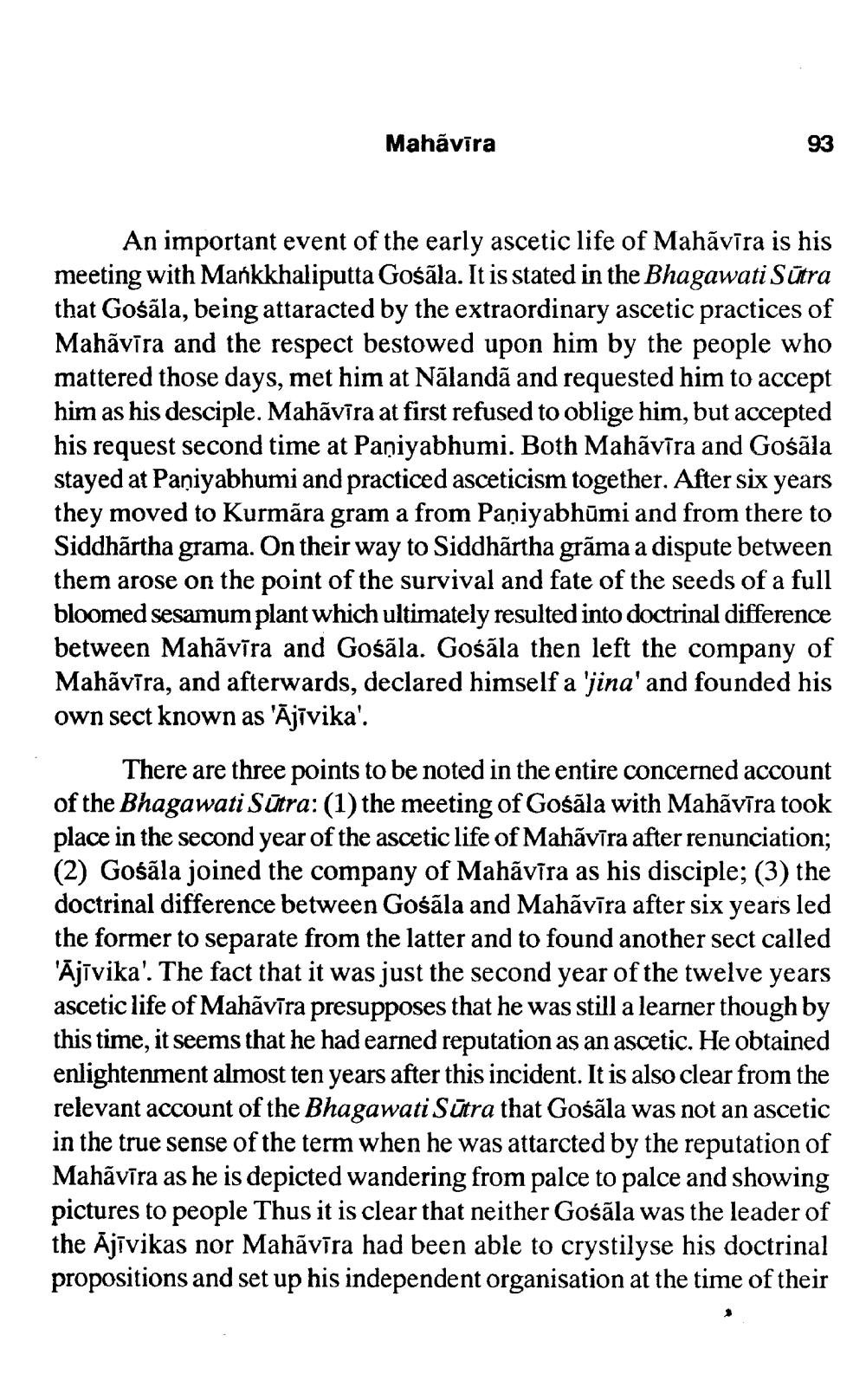________________
Mahavira
An important event of the early ascetic life of Mahāvīra is his meeting with Mankkhaliputta Gośāla. It is stated in the Bhagawati Sūtra that Gośāla, being attaracted by the extraordinary ascetic practices of Mahāvīra and the respect bestowed upon him by the people who mattered those days, met him at Nālandã and requested him to accept him as his desciple. Mahāvīra at first refused to oblige him, but accepted his request second time at Paņiyabhumi. Both Mahāvīra and Gośāla stayed at Paniyabhumi and practiced asceticism together. After six years they moved to Kurmāra gram a from Paņiyabhūmi and from there to Siddhartha grama. On their way to Siddhartha grāma a dispute between them arose on the point of the survival and fate of the seeds of a full bloomed sesamum plant which ultimately resulted into doctrinal difference between Mahāvīra and Gośāla. Gośāla then left the company of Mahāvīra, and afterwards, declared himself a 'jina' and founded his own sect known as 'Ajīvika'.
There are three points to be noted in the entire concerned account of the Bhagawati Sūtra: (1) the meeting of Gośāla with Mahāvīra took place in the second year of the ascetic life of Mahavīra after renunciation; (2) Gośāla joined the company of Mahāvīra as his disciple; (3) the doctrinal difference between Gośāla and Mahāvīra after six years led the former to separate from the latter and to found another sect called Ājīvika'. The fact that it was just the second year of the twelve years ascetic life of Mahāvīra presupposes that he was still a learner though by this time, it seems that he had earned reputation as an ascetic. He obtained enlightenment almost ten years after this incident. It is also clear from the relevant account of the Bhagawati Sūtra that Gośāla was not an ascetic in the true sense of the term when he was attarcted by the reputation of Mahāvīra as he is depicted wandering from palce to palce and showing pictures to people Thus it is clear that neither Gośāla was the leader of the Ājīvikas nor Mahāvīra had been able to crystilyse his doctrinal propositions and set up his independent organisation at the time of their




